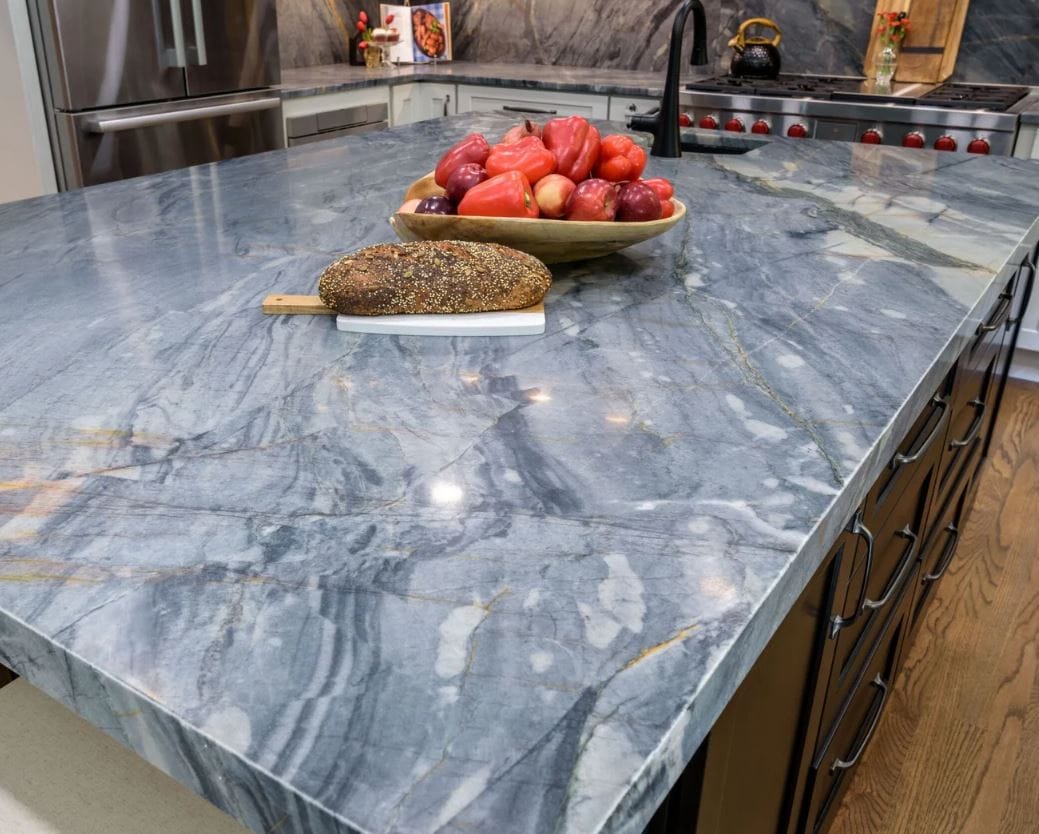Quartzite is known for its durability and stain resistance—especially when properly sealed. But like any natural stone, accidents happen. If you notice a stain or discoloration on your quartzite countertops, the key is knowing how to clean it safely without damaging the surface.
This simple homeowner guide explains which cleaning methods work best for different types of stains and how to prevent them from happening again.
Step 1: Identify the Type of Stain
Not all stains are the same. Knowing the cause will help you choose the right cleaning method.
Common quartzite stains include:
-
Oil stains (cooking oils, lotion, butter)
-
Food stains (coffee, wine, juice, tomato sauce)
-
Hard water and mineral deposits
-
Organic stains (fruit, tea leaves)
-
Metal stains (rust from cans or cast iron)
Once you know what you’re dealing with, you can remove it safely.
Step 2: Start With Gentle Cleaning
Before jumping to stain removal techniques, try simple cleaning first.
Basic cleaning routine:
-
Warm water
-
pH-neutral stone cleaner or mild dish soap
-
Soft microfiber cloth or sponge
Avoid scrubbing with anything abrasive.
Sometimes this is enough—especially for fresh spills.
How to Remove Specific Types of Stains
Oil-Based Stains
Oil can soak into pores if the stone isn’t sealed.
Solution: A Poultice
Use a baking soda + water paste:
-
Spread thick over the stain
-
Cover with plastic wrap
-
Leave 12–24 hours
-
Wipe clean and rinse
Oil stains may take 2–3 applications depending on severity.
Wine, Coffee & Other Food Stains
Acidic foods can discolor unsealed areas.
Solution: Hydrogen Peroxide Poultice
Just like the oil method:
-
Hydrogen peroxide + baking soda
-
Apply and let sit overnight
-
Wipe clean and rinse thoroughly
Avoid vinegar or lemon—acids can dull the finish.
Hard Water / Mineral Spots
Often left behind by standing water.
Solution: pH-Neutral Stone Cleaner or Specialized Lime Remover
-
Spray approved stone-safe cleaner
-
Let sit briefly
-
Wipe with a soft cloth
-
Rinse well
Never use bathroom lime removers unless they are labeled safe for natural stone.
Organic Stains (Tea, Fruit, Leaves)
Can cause brownish or dark marks.
Solution: Hydrogen Peroxide
Dab a small amount on the stain:
-
Allow to sit a few minutes
-
Rinse well
-
Repeat if necessary
Rust or Metal Stains
Rust appears as orange or brown spots.
Solution: Stone-Safe Rust Remover
Only use rust removers made specifically for natural stone surfaces.
Do not use bleach or household rust removers—they can etch the finish.
Avoid These Cleaning Mistakes
To keep quartzite looking flawless, avoid:
-
Vinegar or acidic cleaners
-
Lemon or citrus cleaners
-
Abrasive scrub pads
-
Magic Erasers (they dull the finish)
-
Harsh chemicals not labeled stone-safe
-
Leaving oils or liquids sitting overnight
Quartzite is tough—but the wrong cleaner can still damage it.
Preventing Future Stains
The best way to keep quartzite stain-free is simple:
✔ Seal the stone regularly (usually once per year)
✔ Clean spills as soon as they happen
✔ Use coasters, cutting boards & trivets
✔ Use a pH-neutral daily cleaner
✔ Keep the surface dry around sinks and faucets
Proper sealing fills natural pores, keeping stains from soaking in.
When to Call a Professional
If a stain:
-
Has been there for several months
-
Won’t lift after multiple poultice applications
-
Is accompanied by etching or dull spots
A stone restoration expert can deep-clean, polish, and reseal the surface.
Final Tips – How to Remove Stains from Quartzite Without Damaging It
Removing stains from quartzite is usually simple—just match the cleaning method to the type of stain and avoid harsh chemicals.
With quick cleanup and proper sealing, quartzite stays:
-
Beautiful
-
Durable
-
Easy to maintain
-
Resistant to everyday messes
Caring for quartzite the right way ensures it continues to look like the premium natural stone it is.

